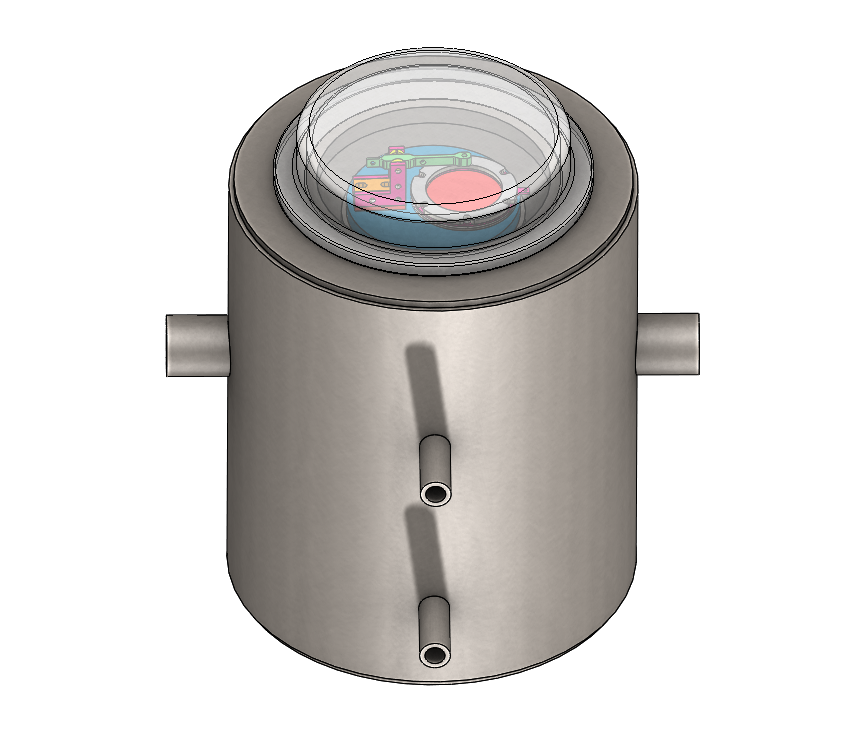About This Project
We hypothesize that the addition of a new environment controlled, purpose-built synthesis and experiment chamber will enhance the synthesis of carbon nanotube technology and lead us to make new discoveries about growing vertically aligned arrays of CNTs. Until now, we've used an old vacuum chamber that we modified, but it's thermal behavior is limiting the experiments. We'll share the test data of the chamber, namely the vacuum level and temperature stability achieved.
Ask the Scientists
Join The DiscussionWhat is the context of this research?
A carbon nanotube (CNT) is a nano-size cylinder of carbon atoms. CNTs exhibit fantastic tensile strength, thermal, and electrical properties. Imagine ultra-light planes & cars, carbon-based electronics, and super capacitor batteries.
We believe that by harnessing CNT technology, we can enable the development of revolutionary new fiber that will replace metals, high-strength polymers and carbon fiber for structural applications. CNT-based electronics will replace semiconductor-based electronics and sensors. Ultimately, we'll usher in a carbon revolution.
Without an environmentally controlled chamber to enhance the synthesis of carbon nanotube technology and optimize the growth of vertically aligned arrays of CNTs, we will not be able to develop this new fiber.
What is the significance of this project?
If our hypothesis is proven true, the experiments carried out with the new chamber that has better vacuum and temperature control, will yield carbon nanotubes (CNTs) with superior properties. These properties include greater length and tensile strength, more pristine molecular structure, purity (no contaminants) and greater thermal and electrical conductivity. The ramifications of this success are that we've laid the foundation for the commercial CNT industry to finally produce macroscopic CNT products that exhibit these superior properties. Such properties enable the re-design of many products in many industries.
Once our CNT synthesis technology is developed, we'll patent and then license the technology to industry leaders representing multiple sectors of CNT product manufacturing.
What are the goals of the project?
We're asking for funding to develop an environment controlled, purpose-built synthesis and experiment chamber. Our hypothesis is that the new chamber will allow for better temperature control and enhance the synthesis of carbon nanotubes (CNTs). It'll lead us to new discoveries about growing vertically aligned arrays of CNTs.
First, we will determine the results by measuring the level of vacuum and temperature stability that we can achieve. The efficacy of CNT synthesis using the new chamber will be the second proof that our hypothesis was correct. CNT synthesis will be measured by the density, length and purity of the CNTs.
We will begin within one month of receiving funding.
Budget
The detailed design finalizes the mechanical, vacuum, and temperature systems. Fabrication cost is a university's machine shop's estimation of the build cost. The student will be trained to integrate the new chamber into the experimental systems and carry out the initial operational tests of the chamber's vacuum and temperature capabilities. The supplies are ancillary fittings and vacuum components required for operation. The student will carry out the initial experiments.
These new experiments will enable optimization of the synthesis of vertically aligned arrays (VAA) of carbon nanotubes (CNTs) our process. Current experiments are hampered by lack of environmental control.
The optimized VAA of long, strong, pristine CNTs promise to realize the tensile strength, thermal and electrical properties of CNTs. These are the building blocks of a carbon materials revolution that will propel civilization forward, as Bessemer's cheap steel revolutionized industry in 1853.
Endorsed by
 Project Timeline
Project Timeline
We will finish the chamber's detailed mechanical, vacuum and thermal design on 11/15/19. Chamber fabrication will begin 11/18/19, with machining finished week 1 and assembly finished week 2. Vacuum and thermal testing will begin 12/2/19. Synthesis experiments focused on CNT length, strength and purity will begin in 1/13/20 continuing until our research is completed. The expected outcomes are enhanced CNT synthesis and optimized growth of vertically aligned arrays of CNTs.
Oct 14, 2019
Project Launched
Nov 15, 2019
Detailed Design Finished
Nov 18, 2019
Fabrication Begins
Dec 02, 2019
Testing Begins
Jan 13, 2020
Experiments Begin
Meet the Team
Affiliates
Richard B Samuelson
I'm an experienced investment banker who served as a Managing Director at both BNP Paribas and UBS. I'm also a serial angel investor who currently serves on three early stage company boards and has invested in more than 20 early stage companies. I'm an advisor to Y Strategies fund which is a listed fund dedicated to commercializing technologies sourced from the national laboratories. I also serve as co-president of the Keiretsu forum (Tacoma). My certifications include: the CFA, CAIA and FRM designations.
Dr. Bryan Laubscher
I'm the founder and CEO of Odysseus Technologies, Inc. I earned my BS in Physics from Ohio University and my PhD in Physics (with a concentration in Astrophysics) from the University of New Mexico. I have over 30 years of experience in scientific research and development. My scientific working career began in 1987 at Rockwell International. Most of my career was spent at the Los Alamos National Laboratory (LANL) where I began as a graduate summer student and ended as a project leader. As a project leader at LANL, I specialized in leading small teams of researchers in concept creation, experimental demonstration and rapid prototype development – exactly the strategy of the Odysseus Technologies business plan.
I left LANL in January 2008 and moved to Washington state. I formed Odysseus Technologies in 2009. Odysseus Technologies is a carbon nanotube technology development company. The goal of the company is to develop CNT synthesis and industrialization technologies.
I began with a set of ideas for maximizing tensile strength of existing CNT materials using textile and chemical techniques. I achieved modest strength increases. Charting a new course, I developed a more strategic approach, and after years of further research and experimentation, the novel synthesis technology (called TREKANG) was invented and verified by experiments.
The company's research is closing in on the last two breakthroughs required before transferring the technology to large corporations for commercialization and product development.
Additional Information
This is the preliminary design of the new synthesis and experimental chamber.

Project Backers
- 7Backers
- 6%Funded
- $278Total Donations
- $39.71Average Donation



